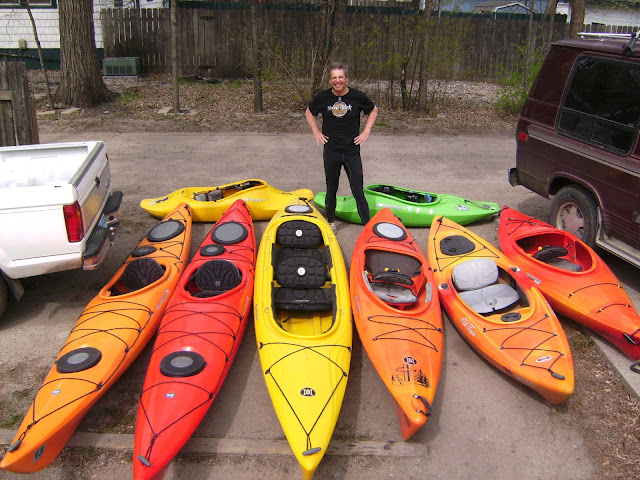The first river you paddle runs through the rest of your life. It bubbles up in pools and eddies to remind you who you are. -- Lynn Noel
The Otter Tail River was the first river where I got a taste of whitewater. It's Minnesota's eighth-longest river running through the western part of the state before dumping into the Red River. It starts out as a narrow crystal-clear stream as it meanders downhill through the countryside's lakes and marshes. It doesn't move particularly fast but offers canoeists plenty of opportunities for wildlife views along the tranquil river trail. However, east of Fergus Falls, the Otter Tail River picks up speed after making an abrupt turn toward the west, running through a valley filled with Class I and II rapids.
Whitewater is uncommon in western Minnesota. The gradient of the land just doesn't drop that fast. In California, the gradient for popular whitewater sections is measured in feet per mile; but in northwest Minnesota, the gradient is gauged in inches per mile. So don't look for big drops. It has been said that a second-hand pool table has more of a slant to it than a northwestern Minnesota river.
That said, the Broken Down Dam site on the river just east of Fergus Falls has been offering thrills and spills for canoeists and kayakers wanting to take a small bite of whitewater. The crumbling dam has been mostly forgotten since its collapse over a century ago. Busting through its center, the river tumbles, swirls, and drops between two massive concrete walls. During the spring runoff or after a good summer rain, the stream can rage into a fast-moving Class III rapid. Combined with a boulder garden stretch of class II waves before reaching the dam's remnants, it's a perfect place for a whitewater kayak in a place where rapids are hard to find.
About ten years ago, I was just getting into paddling, and of course, just as I do today, I wanted the thrill and challenge of paddling rapids. With Sigurd Olson's words echoing in my head, "I know this: as long as there are young men with the light of adventure in their eyes and a touch of wildness in their souls, rapids will be run."
My son Cole and I dove in headfirst. We bought two used whitewater boats at a Twin Cities kayak auction. Probably, not the best fit, but it got us on the water. We took turns running that foam-laced section of the river one afternoon, feeling a sense of triumph after bounding through the crashing waves.
This move will be shorter than my move to California from the Midwest and the Otter Tail River. My wife Debbie and I are leaving Fair Oaks and moving up into the foothills of the Sierra Mountains, where we all know the rivers do rush, tumble, and fall. I will miss the closeness of some of my favorite paddling spots in the valley, but, unlike Minnesota rivers, I'll still be able to visit them from time to time.



.jpg)



































